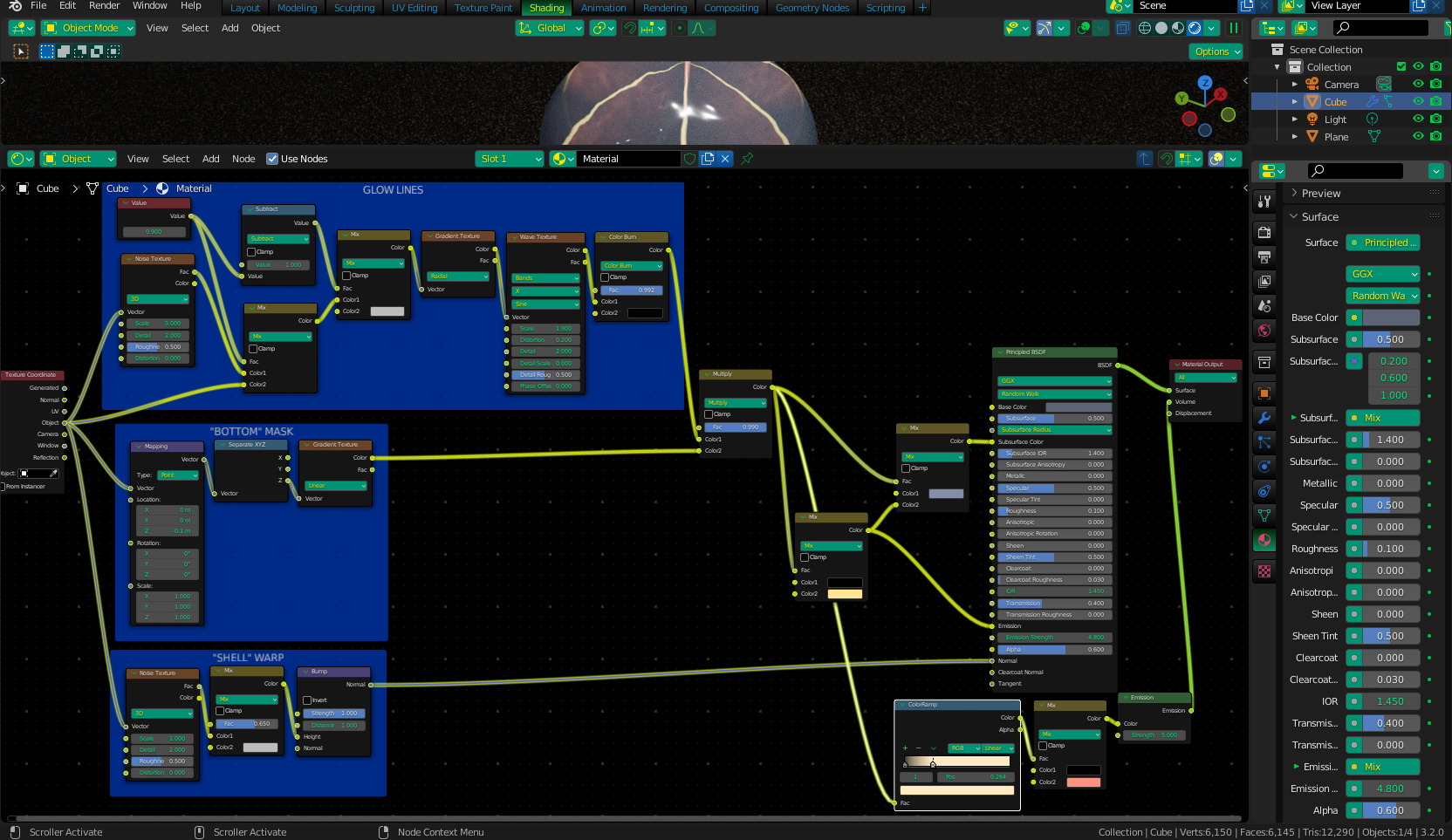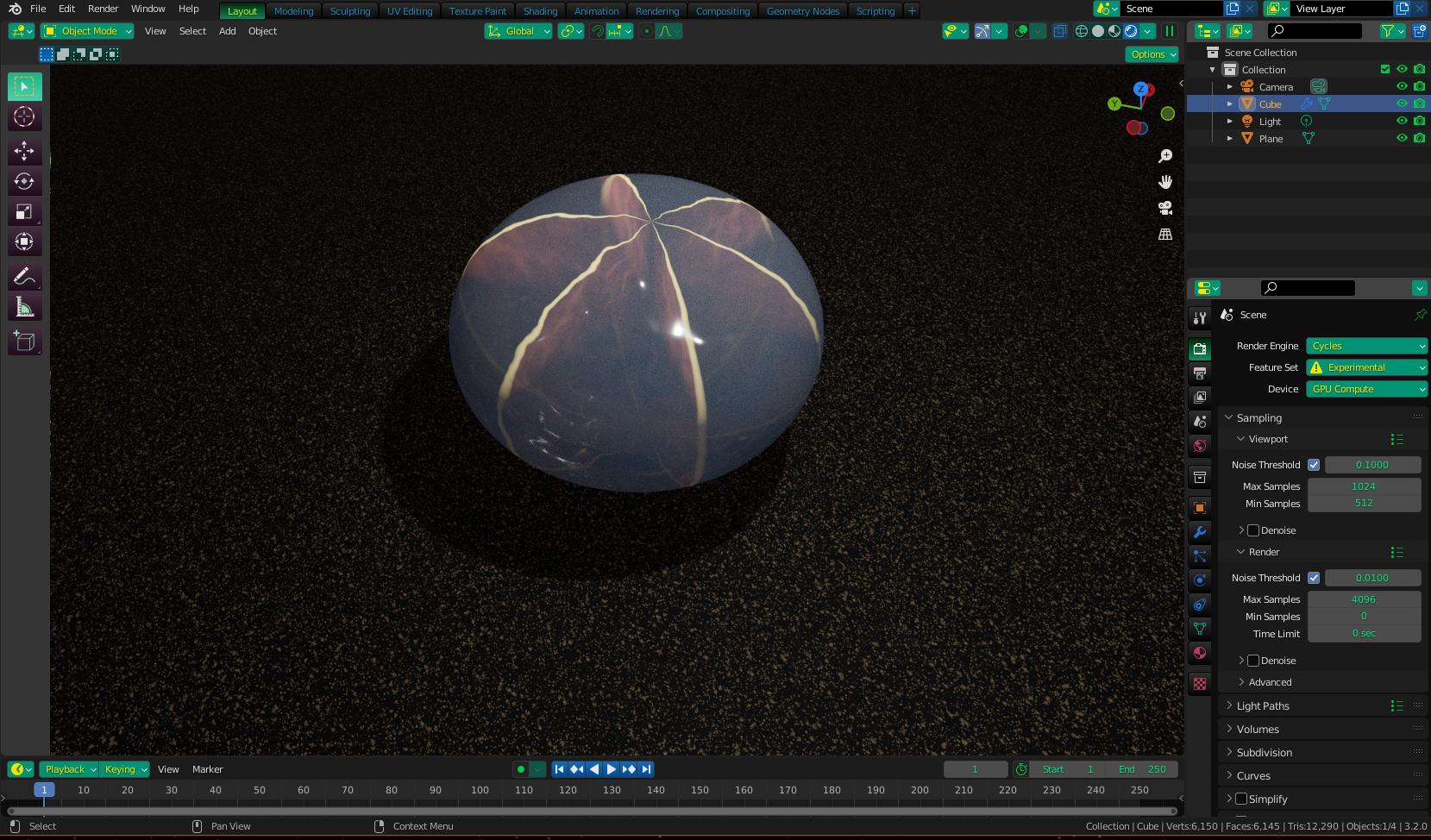

 Slowly but surely getting the hang of using nodes in Cycles. I thought I would try to make a star sapphire. While making a cornflower-blue, translucent shiny oblong is easy, figuring out the important part (the star) isn't. Any suggestions? I was initially trying to pair a voroni-type surface with an emission shader. Didn't work. I am open to suggestions.
Slowly but surely getting the hang of using nodes in Cycles. I thought I would try to make a star sapphire. While making a cornflower-blue, translucent shiny oblong is easy, figuring out the important part (the star) isn't. Any suggestions? I was initially trying to pair a voroni-type surface with an emission shader. Didn't work. I am open to suggestions.
Due to restrictions of my system, I am using Blender 2.79. I am in no position to upgrade, because that would mean getting a whole new computer. Please do not make suggestions of upgrading my system or program. Thank you.
The top picture is the Star of India, what I'm shooting for. The bottom picture is what I have thus far. The node pic is what I've done with it. There are two other nodes, but are disconnected since they had no effect on anything.


